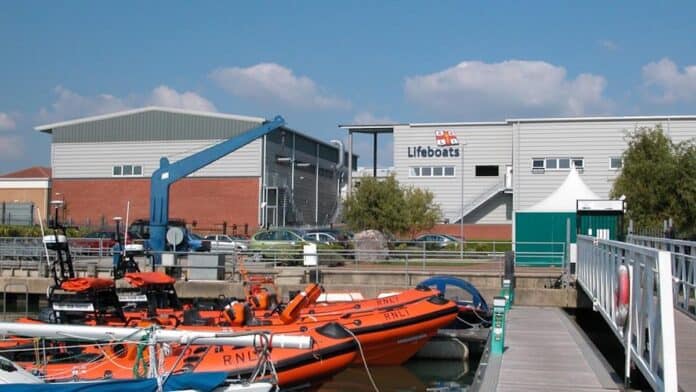The UK’s RNLI is looking to end lifeboat production at its Isle of Wight Inshore Lifeboat Centre (ILC), and consolidate manufacturing in its Poole, Dorset facility.
The proposal follows on from the launch of the RNLI’s five-year plan and 2040 Lifeboat Fleet Strategy.
Under this, the charity says it is proposing to consolidate its lifeboat manufacturing into one location by the end of 2027, to ensure it remains sustainable and fit for the future.
The East Cowes based ILC was opened in 1963 and currently builds and maintains up to 80 boats each year including the RNLI’s inflatable B class and D class lifeboats and inshore rescue boats (IRBs).
For us to continue delivering our core purpose of saving lives at sea, the charity needs to evolve.
Ross Barraclough
The charity’s All-weather Lifeboat Centre in Poole, built in 2015, brings all stages of the All-weather lifeboat building process in-house and under one roof.
The RNLI says it has seen a notable change in sea use around the UK and Ireland, with more people using the coast for recreational purposes such as open water swimming and paddleboarding.
The vast majority of rescues are now closer to shore rather than further offshore.
“Use of the sea around the UK is changing – our data shows 98% of all RNLI rescues now are within 10 nautical miles of the shore compared to years ago when demand was for commercial fishing further offshore,” said RNLI chief engineer and technical director, Ross Barraclough.
Anticipated reduction
“For us to continue delivering our core purpose of saving lives at sea, the charity needs to evolve and respond to the changing demand on our service.”
He continued: “Our 2040 Lifeboat Fleet Strategy determines what is needed to ensure we have the right lifeboats in the right locations to continue saving lives into our third century.
“In response, we need to ensure we can build these boats in the most efficient way, adapting our production delivery to make sure we continue to use our supporter’s money wisely and operate sustainably.”
The changes in need represent an anticipated reduction of around 82,000 production hours – around a third – and the charity says it will not have enough work to justify two facilities.
It is estimated that ILC will require around £5 million of capital investment to remain compliant in the future, while Poole is a newer, larger and more capable site.
A final proposal is expected in 2026 which will be followed by a formal consultation process.




